MORE INSIDE: A Holy Grail of Knowledge
Tom Ballenger’s seminal work on Tahlequah stands test of time Page 9
Quarter Century of Construction
George Fulk founded Habitat for Humanity chapter to serve local families Page 13

MORE INSIDE: A Holy Grail of Knowledge
Tom Ballenger’s seminal work on Tahlequah stands test of time Page 9
George Fulk founded Habitat for Humanity chapter to serve local families Page 13
Foraging can mean feasting for those who know how to harvest Page 21
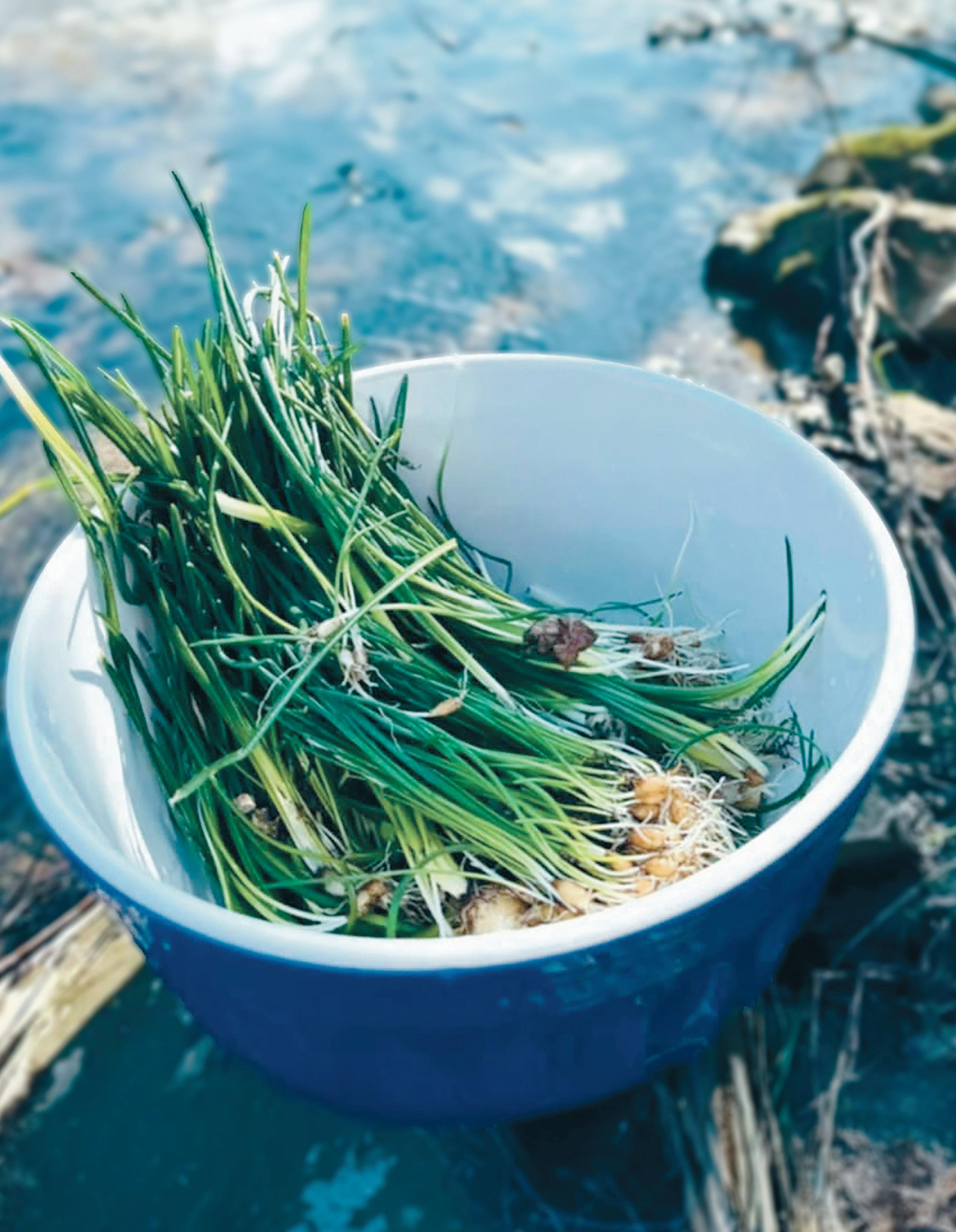
Shades of Grays
Oklahoma couple advocates for Native Americans, women Page 17




Tom Ballenger’s seminal work on Tahlequah stands test of time By
Eddie Glenn
George Fulk founded Habitat for Humanity chapter to serve local families
By Nancy Garber
Oklahoma couple advocates for Native Americans, women
Foraging
University
don’t have much time to enjoy the rites of spring. But a week or so ago, I noticed the daffodils in our front yard had bloomed. And the tulips won’t be far behind, unless Oklahoma’s increasingly unpredictable weather has anything to say about it.
Many folks consider spring their favorite season – a time of rebirth and renewal, and mercifully, warmer weather. I’m a fall person myself, but I do appreciate the symbolism. Even as I type on a Tuesday morning, I can hear the sound of a weedeater from the fellow doing his work just outside my office window. Let’s hope he doesn’t toss up a rock!
Of course, spring also means tornado season in Oklahoma – pronounced “tarnader” by lifelong Okies, of which I am one. Knock on wood, I’ve never seen a tornado – at least, not on the ground – and I’ve been around for about 65 years at this point. But to take our minds off the impending funnel clouds, we have for you the first edition for our third year of the revamped Tahlequah Grapevine. It’s full of well-written stories by mostly former TDP staff members. There’s an exception this time, but close enough: Angel Ford is not a TDP employee, but she’s worked for other papers, including The Northeastern, NSU’s student newspaper. I, too, was on that staff many years ago. Other writers are regulars: R.E. “Eddie” Glenn, Nancy Garber, Pam Moore, and Betty Ridge. All are award-winning writers.
Kim Poindexter
Executive Editor kpoindexter@tahlequahdailypress.com
Heather Ruotolo
Publisher hruotolo@tahlequahdailypress.com
Joe Mack
Account Executive
Chrystina Hanna
Graphic Designer
Codey Poindexter
Cover Photography
Contributing Writers
Eddie Glenn
Nancy Garber
Betty Ridge
Pam Moore
Angel Ford
© 2025 Tahlequah Daily Press
Tahlequah Grapevine is a quarterly magazine published by the Tahlequah Daily Press. The contents of this magazine are fully protected by copyright and cannot be reproduced without express permission from CNHI, LLC.
Tahlequah
It’s no secret that our industry is facing unprecedented challenges. Keeping Grapevine alive will require every bit as much effort from our staff and the community as will ensuring the survival of our newspaper. We are extremely grateful to our advertisers, who see the value in this quarterly magazine, and we hope others will jump on the bandwagon. An email to either Heather Ruotolo or Joe Mack – hruotolo@tahlequahdailypress.com or jmack@tahlequahdailypress.com, respectively – is just a few keystrokes away.
And here’s another opportunity. Our original concept of highlighting the work of established former TDP writers still stands. But now, we will welcome submissions from other skilled writers as well. Those wishing their work to be considered for inclusion in Grapevine can email me at kpoindexter@tahlequahdailypress.com. The exposure is considerable, and I still have a dream of eventually making this a regional publication, which is why only the best work will be accepted.
I’m always looking for new ideas for content readers will enjoy, whether it be a photo spread or other feature. (In fact, we have a good vintage photo collection waiting for publication, if we can find the space.) Your suggestions are welcome, and we’ll begin production on the summer edition the first week of May.
Thanks for joining us and being a part of our mission to serve Cherokee County – and beyond! And welcome to spring 2025.
- Kim Poindexter, Executive Editor

Kim Poindexter has been a member of the TDP news team since 1985. She is in the Oklahoma Journalism Hal of Fame and received the 2022 Oklahoma Press Association Beachy Musselman Award. She has won more than 200 journalism awards on the national and state levels, individually and as part of the team for TDP, which was named CNHI’s Best Newspaper for five consecutive years. She has been named Editorial Writer and/or Columnist of the Year by CNHI and OPA several times. She and her husband, Chris, a facilities engineer, have a son, Cole, and a daughter-in-law, Dani.










































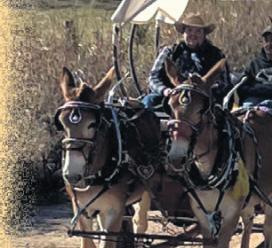



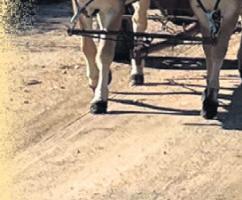




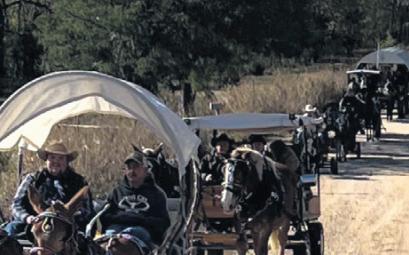


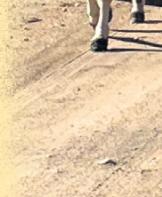


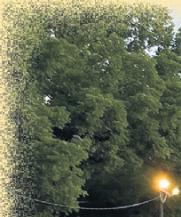







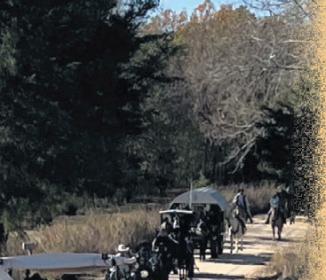




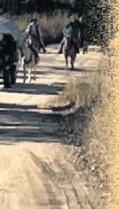





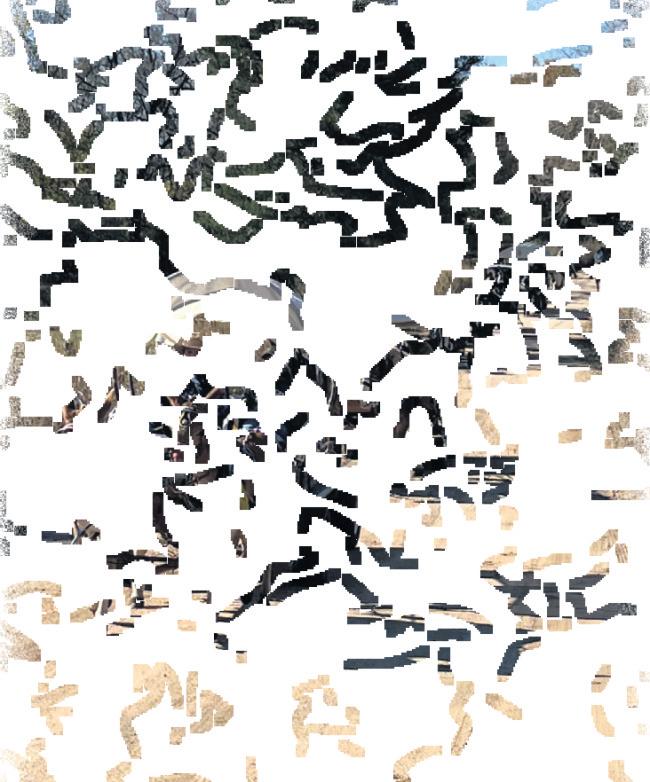
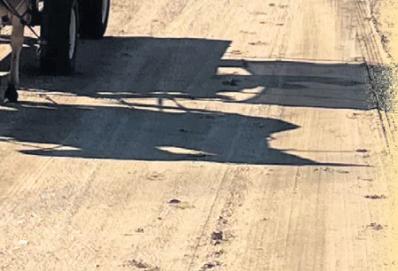
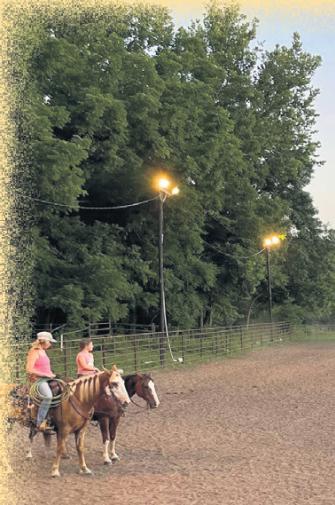

















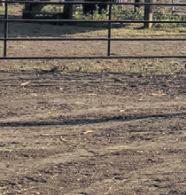





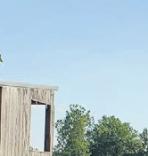






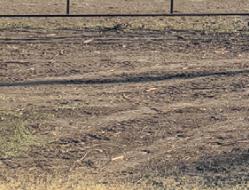













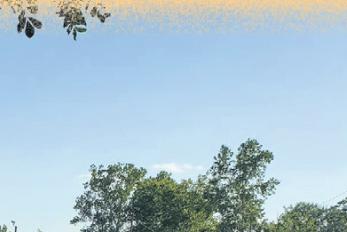









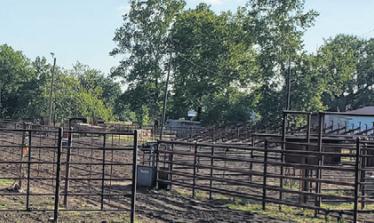



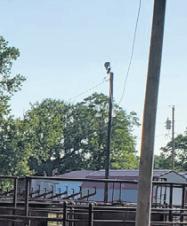


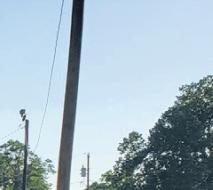

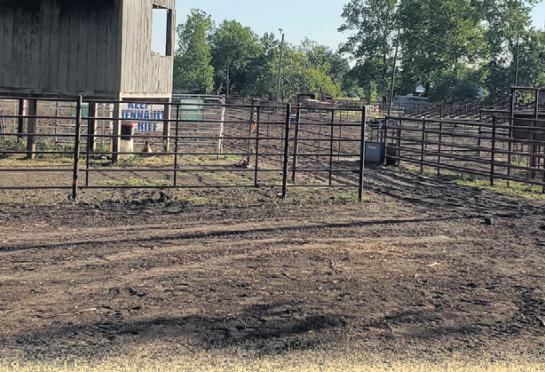











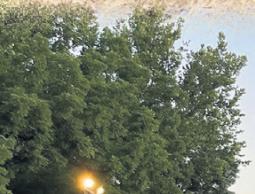



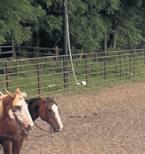

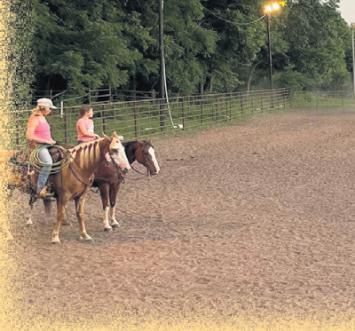


























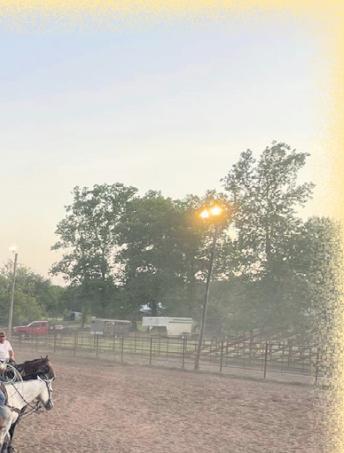
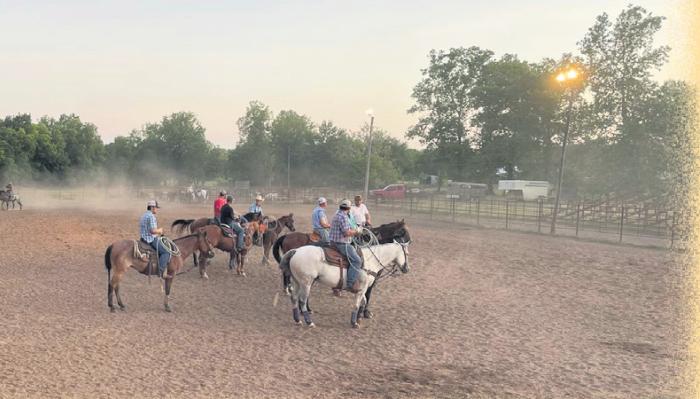


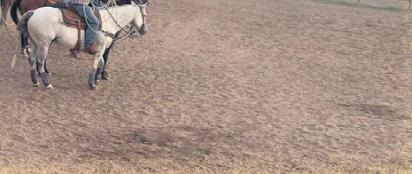



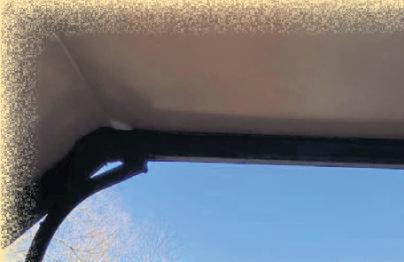









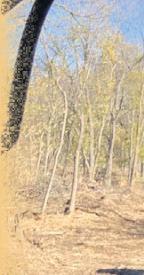


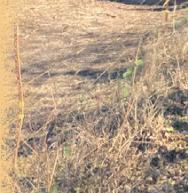



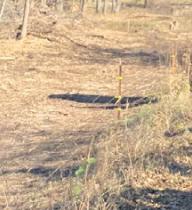






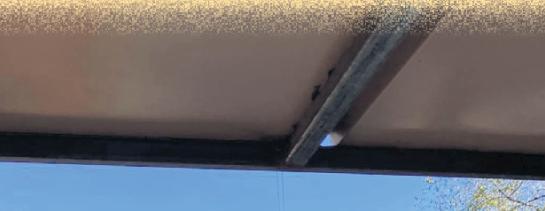





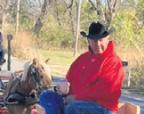



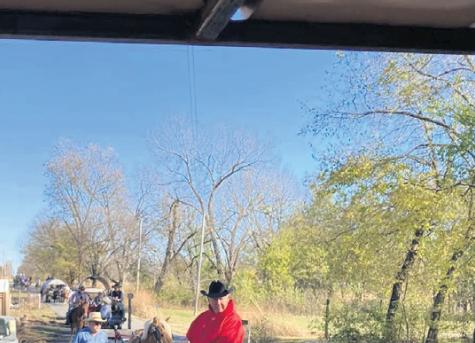







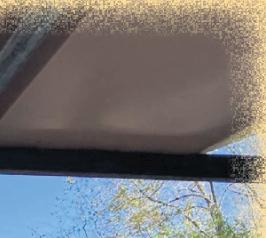








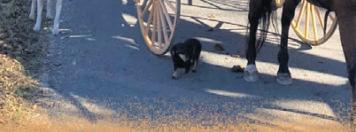








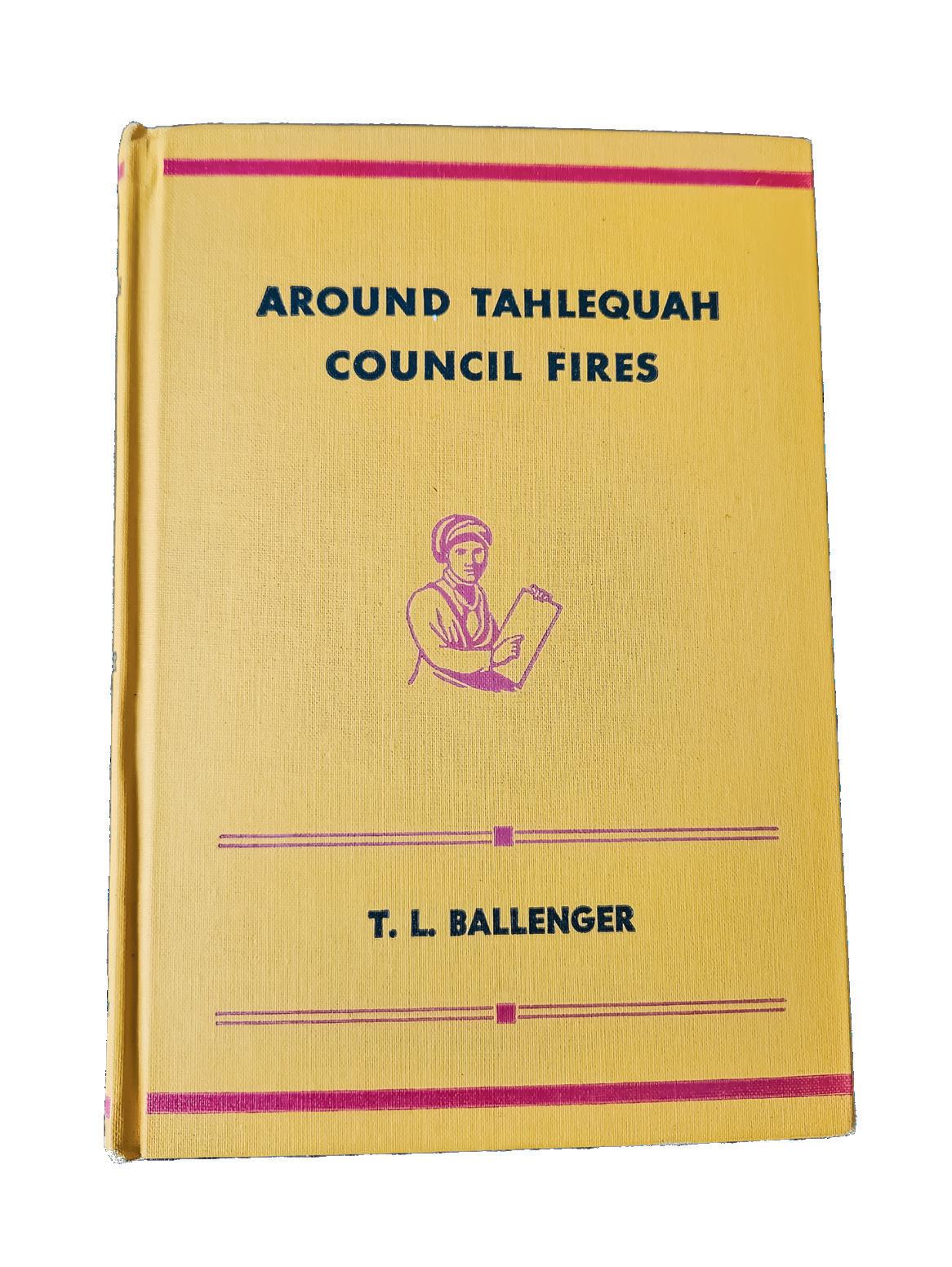
stretching into the early morn ing hours of the following Saturday, I was sitting with a friend on a bench along North Muskogee Avenue. This friend was a generation older than I, and a knowledgeable historian of all things Tahlequah.
At one point, my friend pulled out a flask – the kind I’d only seen before in old Western movies – and took a swig of whatever liquid it contained. He handed the flask to me, and noting that whatever liquid the flask contained hadn’t killed my friend yet, I took a healthy swig myself.
“Hanging out with you makes me feel like one of the locals down on the Courthouse Square,” I told my flask-bearing friend.
The “locals,” for those who may not be aware, were a collection of a half-dozen or so local men who spent a lot of time on the town square in the gazebo in front of what is now the Cherokee National History Museum. They drank a lot of alcohol, and every day or so, a few of them would get so socially unacceptable the Tahlequah Police Department would have to load them up and transport them two
Tom Ballenger’s seminal work on Tahlequah stands test of time
By Eddie Glenn
blocks up Delaware Street to the city jail. They’d be provided room and board for the evening, and the next day they’d be sentenced by the city judge to washing police cars for a half-day to satisfy their debt to society.
This was a never-ending process, and perhaps still is. In some towns, they’d be known as the “town drunks,” but that seems a bit harsh because they could actually be quite entertaining at times. At the Tahlequah Daily Press, where I worked at the time, we simply called them the “locals.”
Just as I was considering how a forced career of washing police cars would not be conducive to my life plans, my friend responded, “You mean the Tahlequah Set’n and Spit’n Club?”
I had never heard that particular term, and told my friend as much. He looked at me as if I were from Mars.
“You’ve never read Ballenger’s book,” he said, sounding more accusatory than questioning.
I could feel my credibility as a writer slipping away – as least, in the eyes of my history-loving, flask-quaffing friend. So I said the only thing that seemed less than idiotic at the time.
“Ballenger?”
My friend took another swig from the flask, handed it to me, and – even though he was a man of very few words – somehow indicated to me that I should simply shut up and listen. I’ve since read just enough of Plato’s Dialogues to know that’s how one learns three ways: by being the idiot in a twoway discussion; by realizing one is the idiot; and by shutting up and listening.
My friend was kind – or flask-filled – enough to give me the abbreviated version: Thomas Lee Ballenger was an Arkansas-born scholar who married a Cherokee woman, lived in Tahlequah through the mid-20th century, was a professor of history at Northeastern State University and most of its earlier iterations, and passed away in 1987 at age 104. In 1935, he wrote a book called “Around Tahlequah Council Fires,” the second edition of which was printed a decade later.
As my friend put it that particular evening/morning, “You may know a lot about Tahlequah, but you don’t really know Tahlequah until you’ve read Ballenger’s book.”
Somehow, I managed to fake my way through another seven or eight years as a writer of all things Tahlequah-related without having read
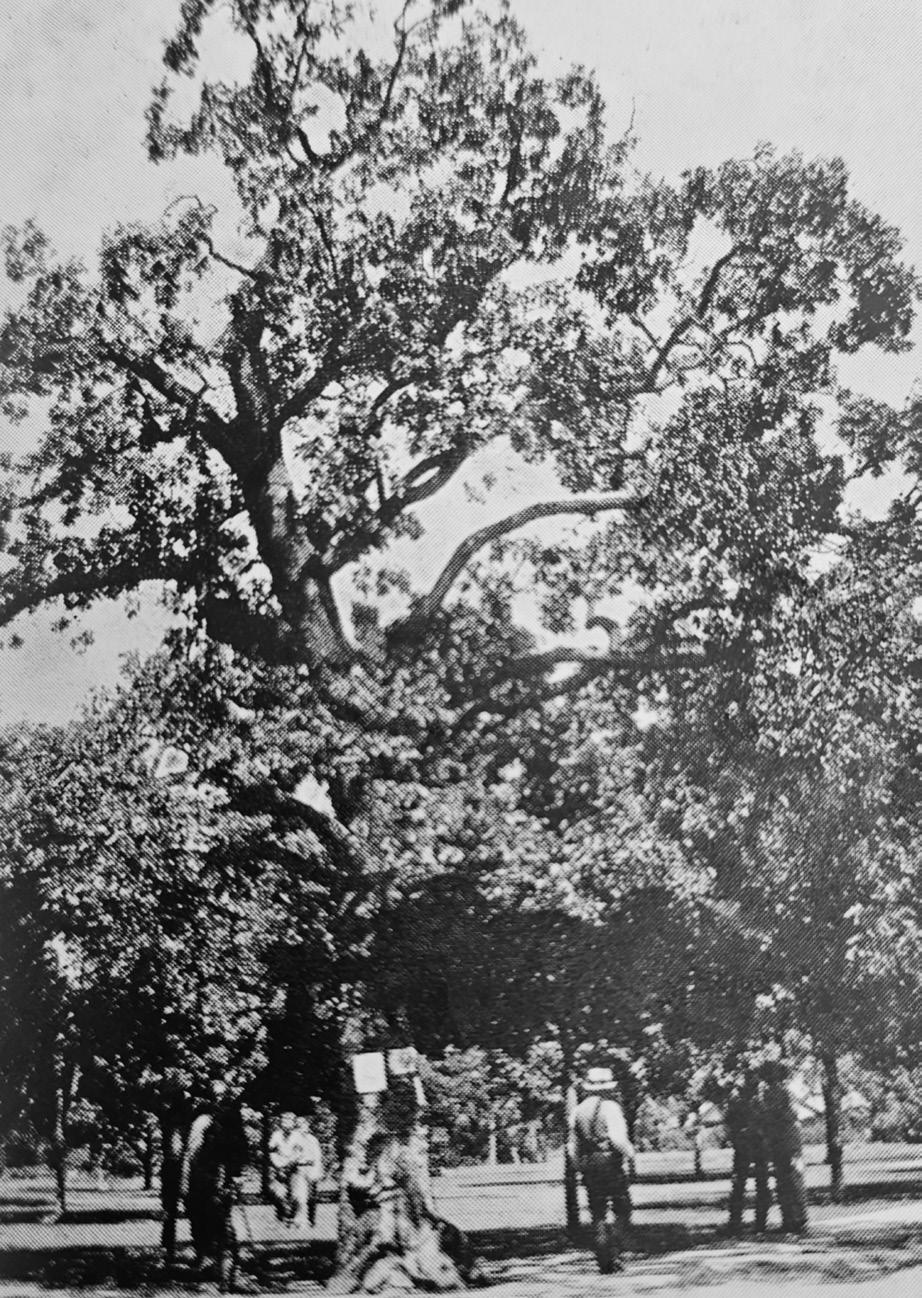
“Around Tahlequah Council Fires.” I got busy with other stuff, stayed busy with other stuff, and simply forgot about T.L. Ballenger and his book.
Then, about a year ago, two local researchers – Dr. Harold Aldridge and David Earl – invited me to a public discussion about the school the Cherokee Nation opened in the late 19th century for Black citizens of the tribe. Commonly known as the Cherokee Nation Colored School, it had become a topic of interest for local scholars once the original location had been determined. During that discussion, the name Tom Ballenger kept coming up, and I was reminded of what my flask-toting friend had told me all those many years ago. He had since passed away, and I still hadn’t read the book, which seemed from his description to be something of a Holy Grail of arcane Tahlequah knowledge.
So a couple of months ago,
I got on a website featuring vintage, out-of-print books, and ordered a copy of “Around Tahlequah Council Fires.” Its arrival in my mailbox was a Christmas morning kind of moment, with much ripping of packaging and feverish unwinding of bubble wrap. I opened the book to the table of contents, and there it was: Nestled between chapters with titles like “The Name, Tahlequah,” “The Love Affairs of a Cherokee Chief,” and “When the James Boys Visited Tahlequah,” was the chapter I’d been waiting a quarter-century to read: “The Tahlequah Set’n and Spit’n Club.” This, according to Ballenger, was a loose organization of those “inclined to ruminate on questions upon which the destiny of the Universe depended; also, for those who got up tired and needed a good day’s rest.”
Ballenger, the astute reader may note, had quite the sense of humor.

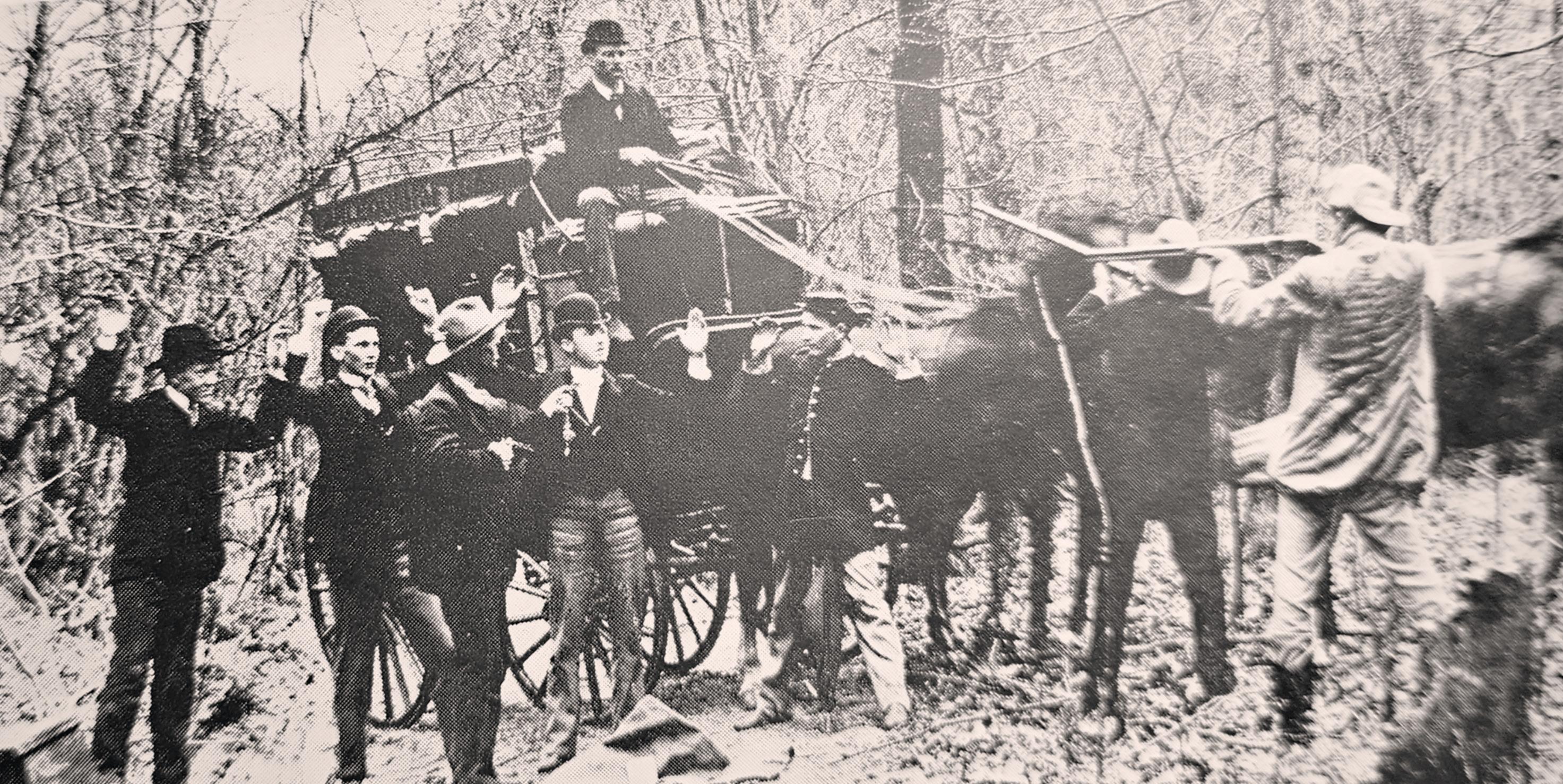
“But however far back in the dim vista of the past this club may have originated or how continuous or intermittent may have been its meetings,” he continued, “for the past decade or so, its sessions have been held regularly in the Band Stand on the west side of the Square opposite Rogers Drug Store.”
Rogers Drug Store no longer exists, but it sounds like the meeting place of the Set’n an Spit’n Club – or “the locals,” in 21st century terminology –hasn’t changed much. It’s kind of comforting to know that, regardless of how much change Tahlequah may undergo, some things remain constant.
In the introductory comments to “Around Tahlequah Council Fires,” Ballenger writes, “Tahlequah is not simply a town, a place to buy and sell goods, a municipality; Tahlequah has a spirit, an individuality, a distinctive personality, a social and cultural uniqueness all her own.” He points out there are many towns in Oklahoma, but few with “the cultural and historical background for which Tahlequah is so noted.”
That “noted” part, I believe, is critically important. One of the things Tahlequah enjoys that other similar town do not is quite a few people writing about it. Oral stories can last for three generations, as people listen
to their parents and grandparents talk about the past happenings in their communities. But beyond three generations, the stories begin the fade.
Ballenger lived four generations before me, but because he committed the stories in “Around Tahlequah Council Fires” to the written word, they continue to serve as source material for the “spirit” of Tahlequah, as he called it. For the entirety of 2025, I’ll be writing a series of stories in the Grapevine about Ballenger and the texts he left for us. I’ll include other material based on Ballenger’s work, including some from retired NSU Professor of History Dr. Brad Agnew, and contemporary researchers like David and Missy Earl. While “Around Tahlequah Council Fires” is out-of-print, vintage copies of the 1935 and 1945 editions can occasionally be found online. Moreover,

a publisher based in India sells it as a public domain publication for $60, shipped from New Delhi for free.
The next installment of Eddie Glenn’s series on Tom Ballenger will appear in the summer 2025 edition of Tahlequah Grapevine.

The Cherokee Nation Capitol in the late 19th or early 20th century. Note the fence, which surrounded the building for much of its history.
Photo courtesy T.L. Balenger, from “Around Tahlequah Council Fires”
R.E. “Eddie” Glenn was Tahlequah Daily Press’ final “official” photographer, and worked in that capacity and as a writer at TDP for 14 years. He and his wife, Jennifer, live in Fort Smith, where he teaches at the University of Arkansas. He has published two books: “Bigfoot Comes to Town: theory, Myth and Alleged Truths About Eastern Oklahoma’s Most Wanted,” and “The Sovereign, the Tribe: An Essay on a Relationship.”

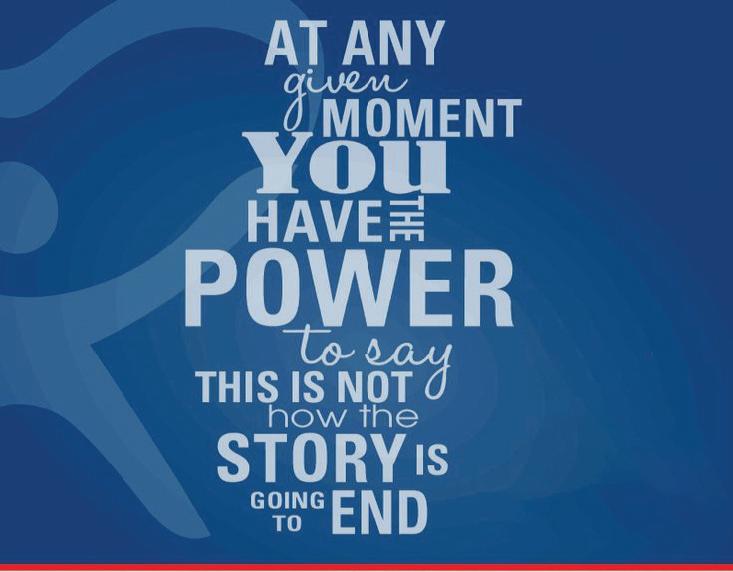







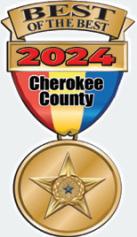




By Nancy Garber
Many folks recognize George Fulk as an accomplished watercolor artist and author. But those who have lived here for a while remember when the now-retired Northeastern State University professor of optometry founded Tahlequah Area Habitat for Humanity, an organization that has built 24 homes for local families in need since 1990.
Many folks recognize George Fulk as an accomplished watercolor artist and author. But those who have lived here for a while remember when the now-retired Northeastern State University professor of optometry founded Tahlequah Area Habitat for Humanity, an organization that has built 24 homes for local families in need since 1990. Fulk grew up in Michigan and originally considered counseling as a career. He earned an undergraduate degree in psychology, then followed his interest in wildlife and the outdoors to pursue a doctorate in biology, hoping to teach at the college level. Along the way, he married Mary Cleary, and they became the parents of George and Kathryn.
Teaching jobs were hard to come by at that time, so Fulk joined a Peace Corps environmental program and took his family to Chile for two years. He then taught briefly at Texas Tech University, publishing several papers on research he’d done on small mammals in Chile. This opened the door to participating in a pest control project
for the Food and Agriculture Organization of the United Nations in Pakistan. From that experience, he published several scientific papers on rodents.
After five years abroad, Fulk found there was still a shortage of permanent teaching positions in his field. But then came an opportunity.
“I saw an ad in a scientific periodical I was taking: ‘Looking for a career change? Consider Optometry,’” Fulk recalled.
The ad from The New England College of Optometry described a twoyear program leading to a doctorate in optometry for those who had Ph.D.s in science.
At age 40, Fulk earned a doctorate in optometry and applied to the newly-established College of Optometry at NSU.

Pursuing a retirement career as a watercolor artist, George Fulk, foreground is joined by the late artist Jerald Peterson in 2014 for a session of plein air painting at the gazebo on Cherokee Square. Tahlequah Daily Press photo

“It was a good fit for me, since I was an academic with a proven track record in research and a new degree in optometry,” Fulk said.
His 20 years in the classroom were rewarding.
“My 400 or so students were all smart and highly motivated – a teacher’s dream. The first-year students were so serious that they would take notes when I told a joke. I also did some interesting research on the development of near-sightedness in children,” he said.
He had plenty of energy in those days and was constantly looking for a way to have a positive impact on the community, a motivation that came out of his years with the Peace Corps.
“After a few years on the job, Kathleen Foster, one of my students, asked if I would be willing to go with a group of Methodist students to Coahoma, Mississippi to build houses for Habitat for Humanity,” Fulk said.
It was a week that changed his life.
“College volunteers from all over the country were transforming this small, impoverished town. They were building about 10 houses a year, enough to replace all the shacks in that little town so everyone would have a decent place to live,” Fulk said. “[NSU Business Professor] Bill Morris was the other faculty sponsor on this trip. We decided we would establish an affiliate of Habitat for Humanity in Tahlequah and build houses, right here in River City.”
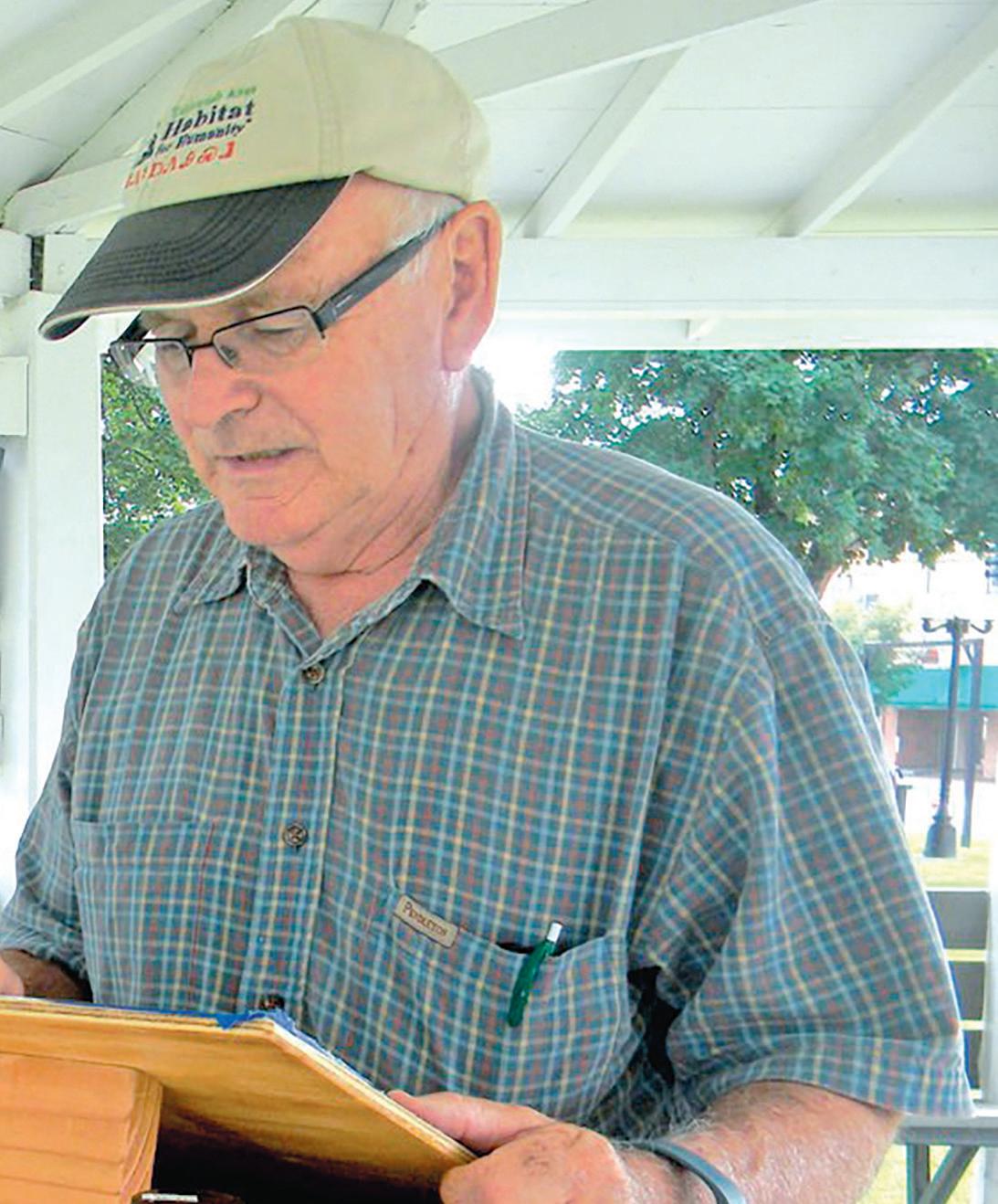
The previous year, former President Jimmy Carter had spoken at NSU and signed the charter for the campus chapter of HFH. Acting on local interest and enthusiasm, Fulk and Morris put together a list of individuals and invited them to a meeting at the library, where they collected several hundred dollars in seed money for the program.
With the help of Linda Cheatham – a member of the founding board and now TAHFH’s executive director – Fulk filled out the application for an affiliate charter.
“George and I spent many hours after work completing the paperwork to apply for the 501(c)(3) for Tahlequah Area Habitat for Humanity,” Cheatham said. “George and Bill had just returned from a trip with the NSU campus chapter of Habitat and were determined to build Habitat houses in Tahlequah. The organization has given the community the knowledge that substandard housing exists right here in Tahlequah, and volunteers working together can give a low-income family a hand up to better housing.”
The first Habitat house was constructed 25 years ago, on Coy Street. TAHFH builds one house per year. According to the organization’s website, families, couples or individuals in need of decent shelter apply to local Habitat affiliates. A committee assesses each applicant’s level of need, willingness to partner in the program, and ability to
repay a low-interest mortgage loan.
“Many families have benefited from the work of Habitat, especially those with children,” Fulk said. “To have a quiet place to study after school and a clean place you can return to after work means a lot. I know of one family in particular whose child has completed a degree at NSU and now is embarked on a good career.”
At first, fundraising was a challenge, until Fulk heard Habitat founder Millard Fuller say at a meeting: “You are doing a favor for people when you ask for support. They have excess resources, and you are giving them an opportunity to put that excess to good use.”
“I let that message sink in and motivate me,” Fulk said. “Rarely was I turned down.”
Community support has come from all sectors, from individual donors to businesses like Tahlequah Lumber Co. and Lowe’s.
Fulk remained active with Habitat for about 15 years.
“Most of my friends were involved, although I told people you don’t have to volunteer for Habitat to be my friend, but it sure helps,” he said.
When an executive director was
required, Cheatham stepped forward. “Over the years, she has transformed TAHFH from a shoe-string operation run by a few idealists to a solid long-lasting non-profit with some built-in funding. A big step forward was the establishment of the Habitat Restore which provides a good revenue stream, gives employment to people, and prevents tons of used materials from going into the landfill,” Fulk notes.
After retiring from NSU, Fulk spent time playing tennis, fishing, kayaking, and building boats. Stiff joints convinced him he needed a more “sedentary hobby.”
While vacationing at Yosemite National Park, he participated in a watercolor painting class offered by the artist-in-residence. Now painting is a major part of his life.
To date, Fulk has written and illustrated “Growing Up in the 50’s” and “Maturing in the 60s.” Also a bird enthusiast, Fulk has published the illustrated “Cherokee County Bird Book” and is working on a second volume. His paintings and books are available at Tahlequah Creates, on Muskogee Avenue downtown.
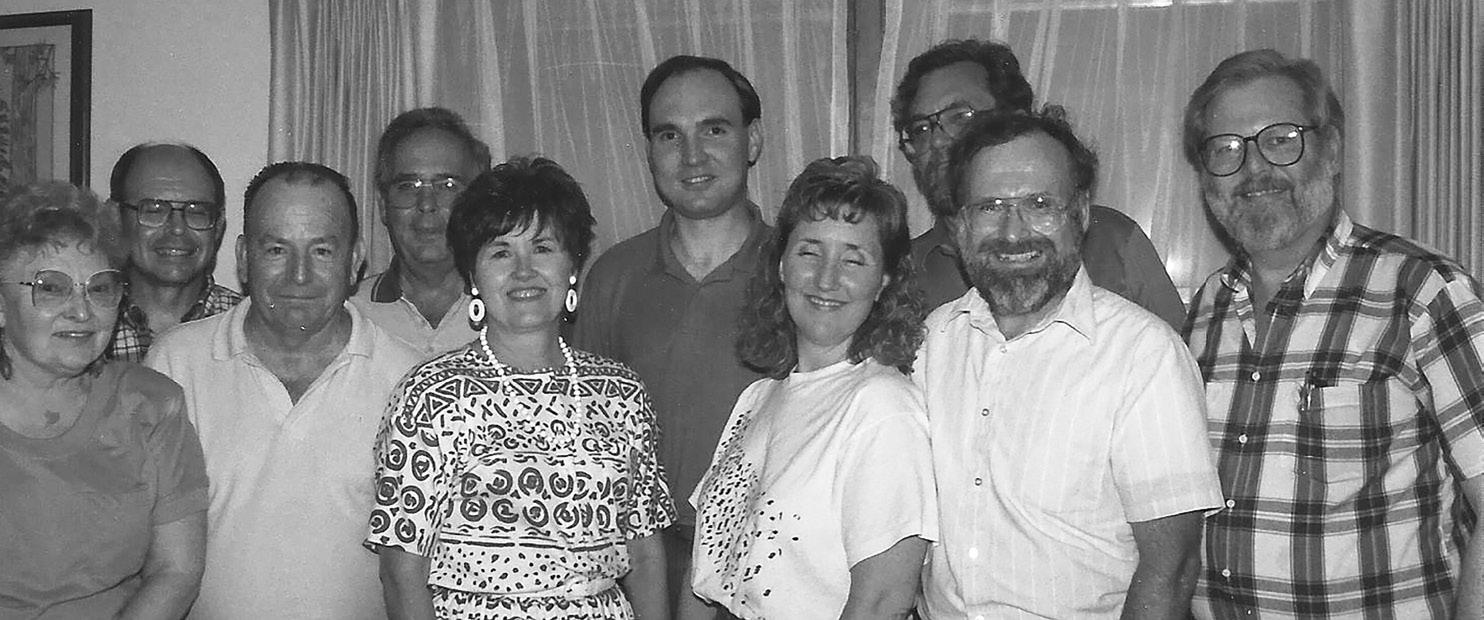
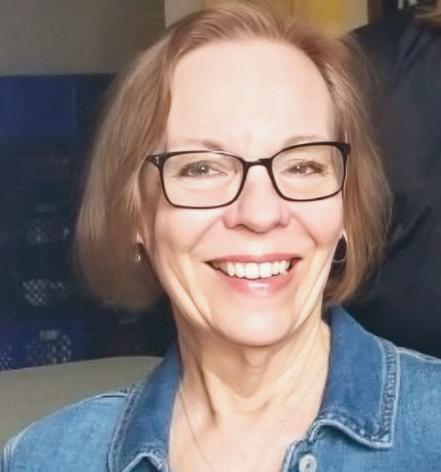
Nancy M. Garber, is a lifelong journalist and photographer. A former member of the TDP editorial and advertising teams, she retired from NSU as director of Communications and Marketing and still likes to pick up the pen and camera now and then.

Nestled in the heart of Oklahoma’s Green Country, Tahlequah, Oklahoma, is ahidden gem that offers auniqueblend of small-town charm andmodernamenities. Whether you're seekingapeaceful retreat, athriving artsscene,ora close-knit community, this beautiful townoffers something for everyone.

Welcoming Community
Tahlequah boasts awarm community where neighbors know eachother.With localevents, small businesses,and charmingcafes,itfeels like family. The low crime rateand strong senseofcommunity make it ideal for families andretirees.


Scenic Beauty and Outdoor Adventure
Tahlequah is aparadisefor outdoor lovers, with the Illinois River offering kayaking, fishing, and tubing. This area features scenic trails for hiking, biking, and camping, while Tenkiller Lakeand Ft.GibsonLake provide stunning spotsfor boating.

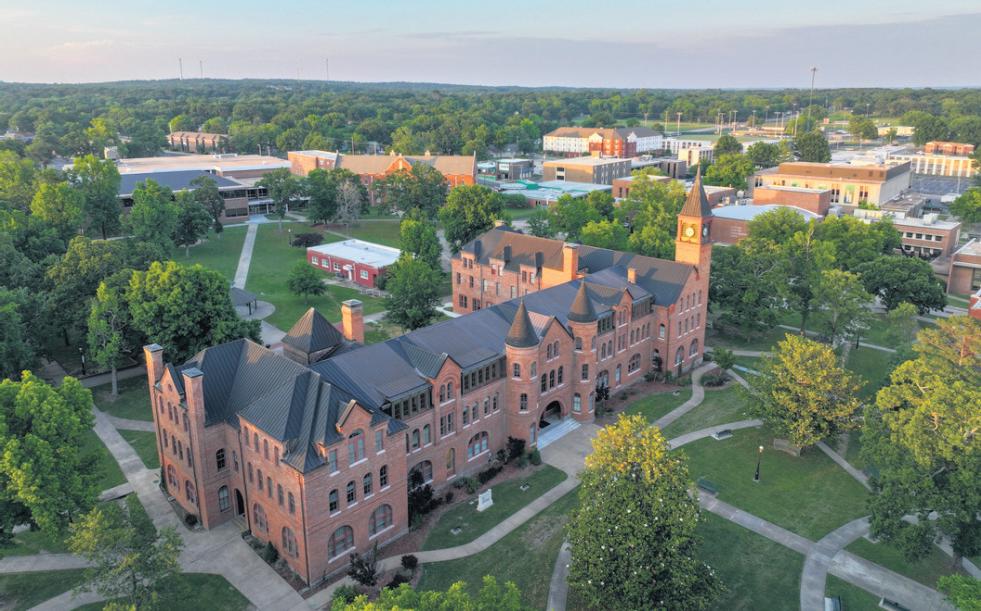
Tahlequah is the capital of the Cherokee Nation, making it avibrant hub for Native Americanculture. Thetownishome to the Cherokee Heritage Center, where youcan learn about the history, art, and traditions of the Cherokee people.
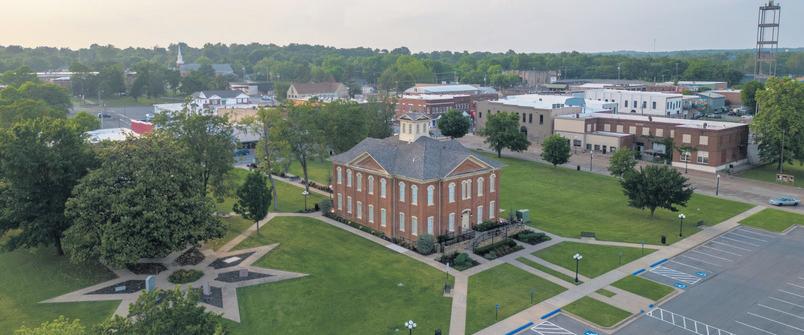
Tahlequah is home to Northeastern State University, providing excellenthigher education opportunities andayouthful energy to the town. The university also offers culturaland artsprograms thatenrich the local community.For families,Tahlequah boasts quality public schools andarange of extracurricular activities.Additionally, with alocal hospitaland several medical facilities, healthcare is easily accessible.
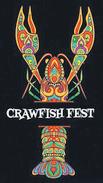

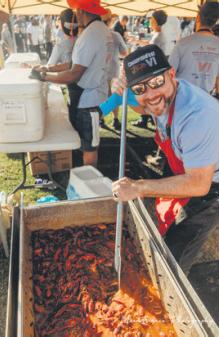
Tahlequah is growingatasteady pace andcontinuestoattracttourists from aroundthe world. In 2025, Tahlequahwill proudly sponsor the Bluegrass &Chili Festival, which is expected to draw over 30,000 festival-goers. The city will also host the Oklahoma FreeWheelevent.Additionally, the Anthis Brennan Family Sports Complex will become a premier destination forbaseball and softball tournamentswith the completion of ngfour new turf baseballfields andfour turf softball fields. owisthe time to be in Tahlequah, OK!
Cherokee Fields, featuri N
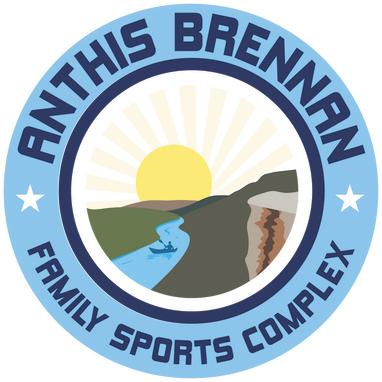



By Betty Ridge

Jim and Olivia Gray have spent their lives working on behalf of Osage citizens and all Native American people — and they’re not about to slow down now.
Both are consultants with Gray and Gray Consultants, and volunteer to assist others as needed. In today’s political climate, they find their services constantly in demand. Jim is a past principal chief of the Osage Nation.
They came to their activism through different routes, but when they came together, they formed a natural partnership.
Olivia – or “Libbi,” to family and friends – grew up in Tulsa, going to powwows as a young person. Through that, she met many people she considers relatives, although not blood relatives, and learned much about Native culture. She attended St. Gregory’s College and the University of Oklahoma.
Libbi works with Gray Consultants, and also is a policy adviser to the Osage Nation principal chief. She is former director of the Osage Nation

Family Protection Department.
Over the years, she has focused her professional energy and passion on helping combat family violence. In recent years, the issue of Missing and Murdered Indian Women has gained more attention on a regional and national level.
Libbi has worked with the Northeastern Oklahoma Indigenous Safety and Education since 2019, on an educational and individual level. The volunteer organization welcomes donor funding.
“We don’t just raise awareness. We go to court with them,” she said. “While awareness of domestic violence issues is rising, many people don’t know its extent.”
A 2016 study by the Bureau of Indian Affairs revealed four out of five American Indian and Alaska Native women have experienced violence in their lives, and 56.1 percent have been victims of sexual violence. That included 39.8 percent in the year before the study.
According to the Centers for Disease
Control, in 2020, indigenous women experienced the second highest rate of homicide.
NOISE wants to make people realize domestic violence isn’t just happening somewhere else. It could be going on next door, or even in your own family. The organization educates people on many issues involved, including stalking. They want people to understand it isn’t just the individuals experiencing violence, but the families are victims, too.
“There are many causes, and it is prevalent in Native and other communities,” Libbi said. “I think all Native women need to have some fundamental knowledge of how to be an advocate, because we’re all endangered.”
She said people need to know how to assess danger, how to do safety planning, how to collect evidence, and how to address victims of domestic abuse.
It isn’t as easy as it may seem. Sometimes telling someone to leave a bad situation can get that person killed.
“This isn’t something you can fly by the seat of the pants,” she said.
In recent times, she is even more dedicated to her work to better families’ situation.
“I think with the current climate, the missing and murdered issue is just going to get worse, the abuse is going to get worse,” she said. “The current [U.S.] administration — they’re making it OK to hate. This administration doesn’t care much for women.”
She will continue to spread the word. Even those who think they may never be personally affected, or know someone who is, should realize the extent of the problem.
“Everybody needs to learn how to be an advocate for at some level. They need to learn how to advocate for themselves and for other women,” she said.
While Libbi has lived her life in Oklahoma, Jim started out in a different environment, spending his early years in Arvetta, Colorado, a suburb of Denver. The Osage Nation had litigated against the Corps of Engineers over taking tribal land to build a dam. The Grays received a share of the tribe’s settlement and moved back to Oklahoma when Jim was 12 or 13. He experienced a culture shock.
“I went from being the only brown face in the school, and when I walked in there, some of the kids in the class were my cousins,” he said. “Eventually
I began to appreciate the opportunity Pawhuska offered me.”
He took up tennis. His skills earned him scholarships to Northeastern Oklahoma A&M and Northeastern State University. He became active in a fraternity at NSU, and that started to take up most of his time. Feeling overwhelmed, he decided to take time off and returned to Pawhuska.
That’s where his professional career began. He went to work as an ad salesman for the Donrey newspaper in Pawhuska, then moved to Bartlesville.
the fair, and it saved the newspaper.
Bartlesville businesses and the newspaper suffered during a tragic flood in 1986. Jim then moved to the newspaper in Norman as an account executive, and expanded his skills.
He enjoyed life as a single man in the college town for a couple of years, then decided it was time to finish the 16 hours of college he needed to complete his degrees. He chose NSU, and applied to sell ads at the Daily Press.
Longtime Publisher Brad Sugg liked his ideas and welcomed him as
“I think with the current climate, the missing and murdered issue is just going to get worse, the abuse is going to get worse.”
There, the retailers were concerned about the possible takeover of Phillips 66 and an uncertain future.
“Thousands of Phillips employees were anticipating early retirement and retailers wondered what their fate would be. The newspaper sponsored a retirement fair. It was probably the most successful newspaper event I’ve ever seen. All sorts of advertisers bought ads tarageting new retirees,” he said.
Thousands of retirees turned out for
an account executive. Upon graduation in 1990, he became ad manager. He discussed projects with Managing Editor Kim Poindexter and worked on promotions.
“I was really glad I was valued,” he said. “When we did a retirement fair in Tahlequah, I beamed.”
He enjoyed working on the “Best of Tahlequah” campaign, a celebration of Tahlequah’s 150th anniversary, and a Tahlequah, Indian Territory promotion.
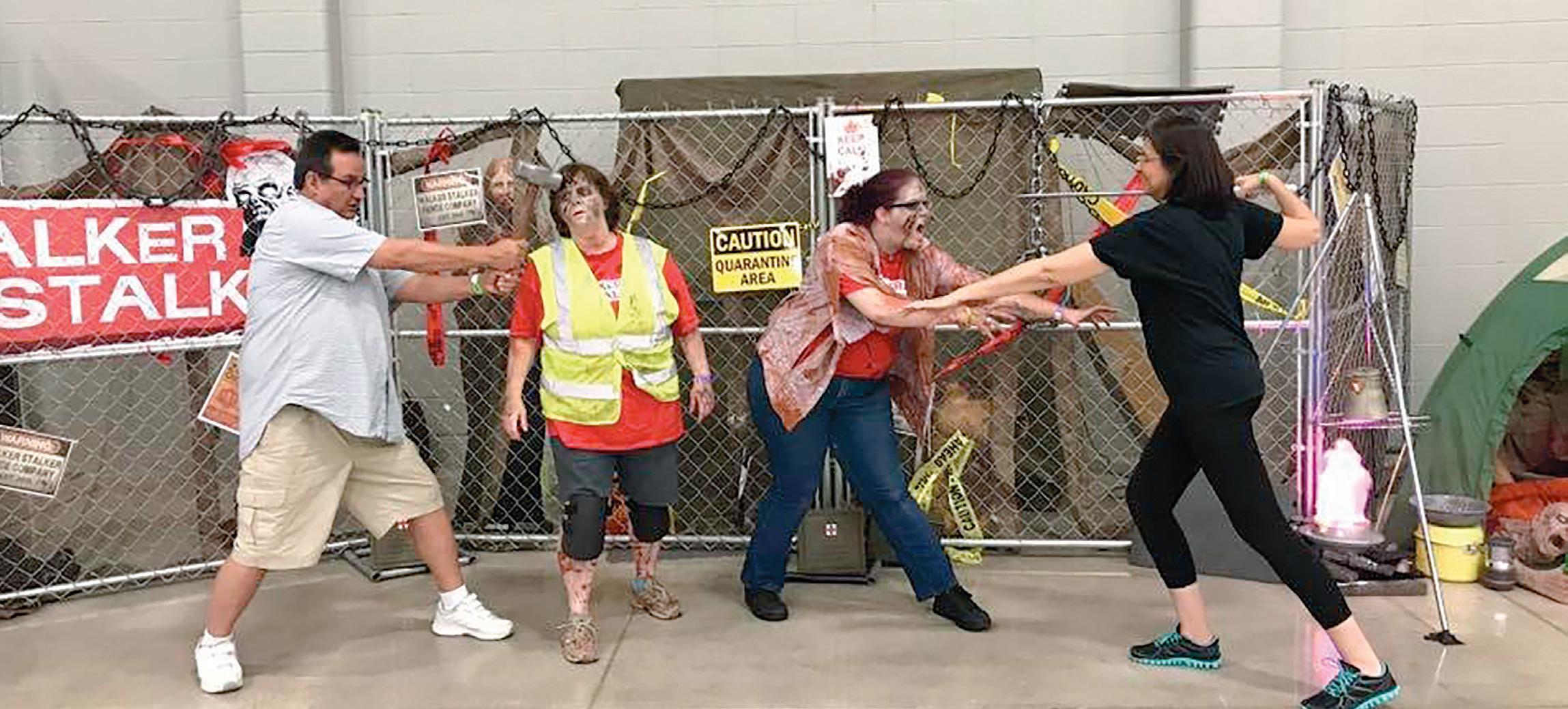
Jim and Libbi Gray find themselves at
U.S. Capitol as part of their ongoing work with Indigenous tribes. Photos courtesy of Jim and Olivia Gray.

Then, he became ad director for a large all-Native ad agency in Tulsa.
Things were becoming more lucrative for tribes in Oklahoma. Highstakes bingo became a big fundraiser, with casinos looming on the horizon.
Jim bought a computer and began publishing a Native newspaper from his home. He moved back to Tulsa, where he established the Oklahoma Indian Times, later expanding to the nationwide Native American Times. For a number of years, the paper was published at the Tahlequah Daily Press office. It grew to have subscribers in all 50 states. Large tribes like the Chero-


kee and Choctaw Nations were buying ads. Publication went from monthly to twice a month to weekly.
Jim targeted Native Americans as consumers and voters. He wrote about issues critical to Natives around the country — Rapid City, Albuquerque, the Minnesota tribes. He covered tourism in Indian country, treating it in a respectful way. The Times published guides to tourism and powwows, and a “Best of Indian Country” edition. The Internet also became important to readers during this time.
Jim’s investigative work led him to the next part of his career. He wrote a
story on the Koch Brothers and their dealings on Osage land, which raised awareness among citizens about how the Osage Nation had lost $25 million to $28 million in revenue it should have received. The chief at the time was close to the oil companies.
Jim decided someone needed to run against him.
“Once that story came out, my phone began ringing. We needed government reform, if for no reason other than that,” he said.
He became that someone. Elected in 2002, he was the youngest chief in tribal history at 40. He had to earn the





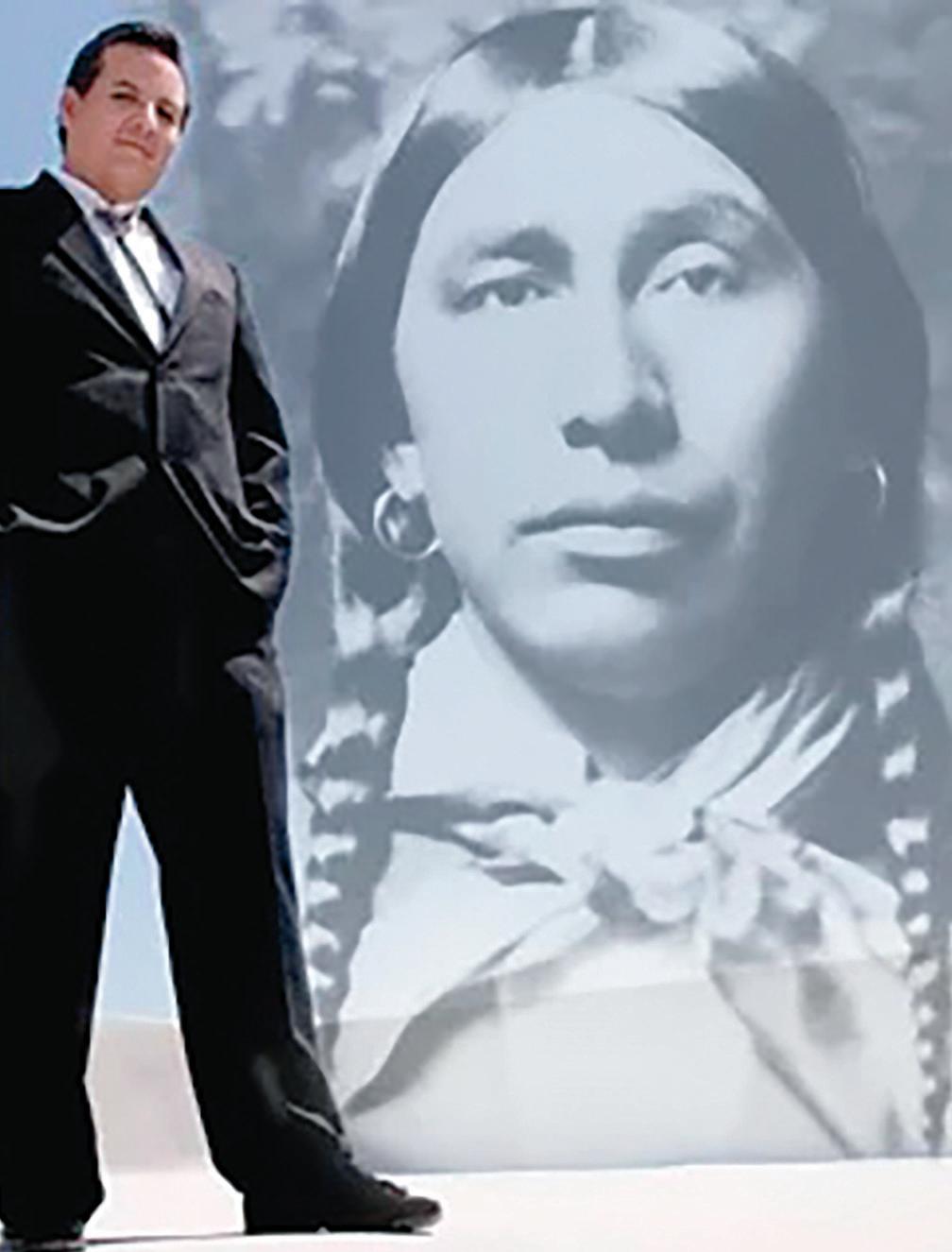
trust of the tribal council, and to learn which battles to pick. His leadership served as a transition to a younger generation.
Several important tribal changes occurred. When he took over, younger Osages weren’t recognized as being full tribal citizens and were denied the ability to get tribal cards. Congress had to amend the original act so Osages had the inherent sovereignty to recognize their own tribal members.
A new tribal constitution was approved March 11, 2006.
During Jim’s two terms, the tribe prospered, growing from 200 to 1,500 employees. They began an annual oil and gas conference and held a sovereignty celebration. They devoted time to
his family and moved back to Oklahoma. Former Principal Chief Bill John Baker engaged him to work with the Cherokee Nation on business and governmental relations. He also worked with the Delaware and Sac and Fox nations.
Jim found himself immersed in another world a few years ago — Hollywood. The book “Killers of of the Flower Moon” brought Osage history of a century ago out of tribal boundaries to a greater awareness. The Osage retained head rights to their oil, unlike other tribes. When abundant oil was discovered on their land, it frustrated oilmen eager to get the revenue.
input when he came to Oklahoma.
“We want you to make the movie the industry has not ever made,” Jim told him.
Scorsese put off the filming to hear more about the Osage experience during the killings.
“That gave us even more of an opportunity to have more of our people participate in this film,” he said.
Jim was invited to New York for private consulting as a descendant of Henry Roan, and he got to have dinner with Scorsese. He was impressed with the way Molly, the main Osage woman in the movie, was treated.
strategic planning.
“I’m quite proud of those eight years,” he said.
After losing a bid for a third term, Jim decided it was time to start over. He was asked to do some consulting work for a group of Native Hawaiians.
“They’re struggling to keep alive their culture, their language and their land,” he said. “No one’s going to give you sovereignty. You have to make them recognize it.”
The Obama administration helped them obtain federal funding to assist Native Hawaiians. Jim also has worked with other tribes and with Native contractors who work with the government.
For a while, Jim obtained two households, then realized how much he missed
Many unscrupulous men married Osage women, then murdered them in the thirst for oil. Osage men – including Jim’s great-grandfather, Henry Roan – were slain during the bloodbath. As a tribal leader and a descendant of one of the victims, Jim consulted with filmmaker Martin Scorsese and his crew.
“I wrote an essay about how important it was for all Osage people and all the Indian community to get connected,” he said. “I talked about how Hollywood has never really gotten the Indian story. The book told the story of the murders but never really included the culture of the Osage people.”
Scorsese received Jim’s
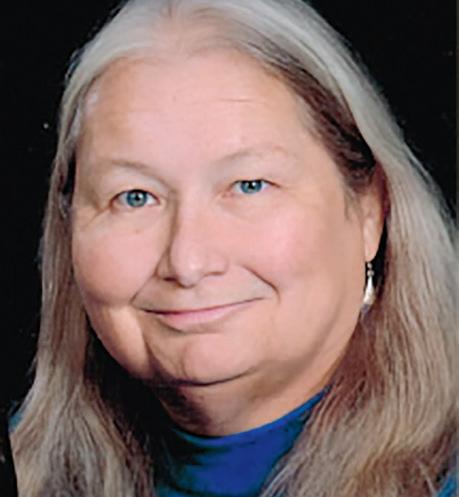
When the movie came out, Jim was interviewed many times. The interviews were published across Oklahoma and nationwide.
Jim is also concerned the current political climate will work his and Libbi’s work more difficult. He would like to see broader coverage of Indian issues nationwide to keep people aware of what’s going on.
“Indians have always had to endure being overlooked by the federal government. At last, the tribes are deciding to fight back,” he said.
The BIA is threatened with closing down many agencies and services. But the Grays won’t give up.
“We have been through dark times before,” Jim said.
Betty Ridge was a member of the Tahlequah Daily Press news team for about 10 years, after spending two decades at other newspapers. She is retired and lives with her cats in Springfield, Missouri, where she is working on her next book. Her first book, “Deadlines,” can be purchased at www.amazon.com.


By Pam Moore
Early spring brings an abundance of wild edibles, and for local foragers who crave their deliciousness, it’s the time of year to put on the galoshes, stomp forth into the deer woods, or head to the river’s edge searching for the bounty that awaits.
Skilled foragers have already scoped out their special spots, and the rest of us can be assured they won’t share the locations of their hunting grounds. Ask foragers the whereabouts of their hidden hunting spots, and they will hem and haw under their breath, and then wander away as if they didn’t understand the question. They are polite, but don’t pursue them; they are secretive and protective, and might get riled up.
It’s fair to ask: What’s out there at this far edge of winter? One of the first delicacies to appear is the chive-like wild onions, which are easy to identify and cook but require tedious prepa-
ration. So most wild onion fans seek out the popular “Wild Onion and Egg Dinners,” eliminating the tedious chore of cleaning and prepping Wild Onions for consumption.
In Tahlequah, the most popular and long-running wild onion event is at the D.D. Etchieson Indian Methodist Church. The church has held this event for longer than anyone can remember. I moved here in 1975 and cannot remember a time when there weren’t wild onion dinners at the church. Put the first Thursday of March on your calendar for next year. The dinner sells out each year, so get there early.
However, those determined to source their own wild onions may want the help of an experienced hunter; otherwise, they may bring home crow poison or wild garlic. The garlic is OK, but crow poison will cause gastric disturbances. Enthusiasts are
often found at the wild pnion dinners, as they love this early delicacy, and thechurch ladies are experts at preparing a perfect plate of onions and eggs. And wild onions, after they are prepped, freeze well for later feasting.
Another early spring green is wild watercress. It’s is the easiest of the foods to find and forage, since they must have clear, running water to thrive. The Town Branch, Spring Creek, and other local freshwater sources are key to finding watercress, which is a multileaf water green, somewhat clover-like in appearance. But watercress differs in that the leaves are thicker and branched. It is a member of the cabbage family and is known to be one of the healthiest of vegetables. Watercress received a perfect score of 100 from the Centers for Disease Control, while other healthy greens only received scores in the 80s, including the dreaded kale.

As days grow longer, watercress produces a small white flower, signaling the end of the season when the greens take on a bitter taste. The most important thing to remember about gathering watercress is to check that the water is reasonably clean and not polluted. Streams that run downhill from farms or gardens may contain chemicals or bacteria that could contaminate the greens. If you are lucky enough to find and acquire watercress, the most common concoction is the wilted watercress salad. Fried bacon –including the hot grease – are mixed with chopped onion, white vinegar, and sugar, and then, while still warm, this concoction is poured over the cress and tossed to wilt it. Serve warm with pinto beans and fresh cornbread. Hungry for more? Attend this year’s Watercress Fest, beginning at 10 a.m. April 26 at the Saline Courthouse Museum.
Paul and Karen Louise Ross live at the east edge of town and are avid food gardeners. Paul is a Master Gardener. The Ross’ garden is an earthly delight where they “allow” wild greens to flourish and intertwine among the raised beds used for food production. Recently, I was treated to a wonderful lunch featuring quiche chickweed and dandelion. It had an amazing flavor profile. However, my favorite green from their garden is sorrel.
Sorrel is tart and tangy, resembling
spinach in appearance but yielding a brighter flavor when included in soup or salads. Sorrel grows almost yearround in Oklahoma. Mixing sorrel with milder greens makes a healthy, piquant salad base that pairs well with rich cheeses and pecans or walnuts. Paul’s favorite is lamb’s quarters, which has a milder taste like spinach; this green holds up well in later heat.
“The first one to appear in the spring is chickweed, a mild green with a taste much like spinach and used like spinach. Chickweed and lamb’s quarters will withstand hot weather and not get bitter, while dandelion greens become bitter in the late spring,” Paul said.
Not all spring stalking is for plants. The best part of spring in Cherokee County is when the sand bass run. Sand bass spawn sometime between the bloom of redbuds and dogwoods. Enthusiasts may have an idea where the fish will be, but since the river changes every year, finding a good fishing spot is a key challenge. Sand bass fishers also have their secret fishing holes and will not share their secret fishing holes. Sand bass is mild-flavored and slightly sweet, and is best cleaned and cooked as soon as they are pulled from the Illinois River. Most “af-fish-ianados” prefer their sand bass fried in hot oil after being rolled in a spicy cornmeal and flour mixture. Sand bass freeze well, but real fans
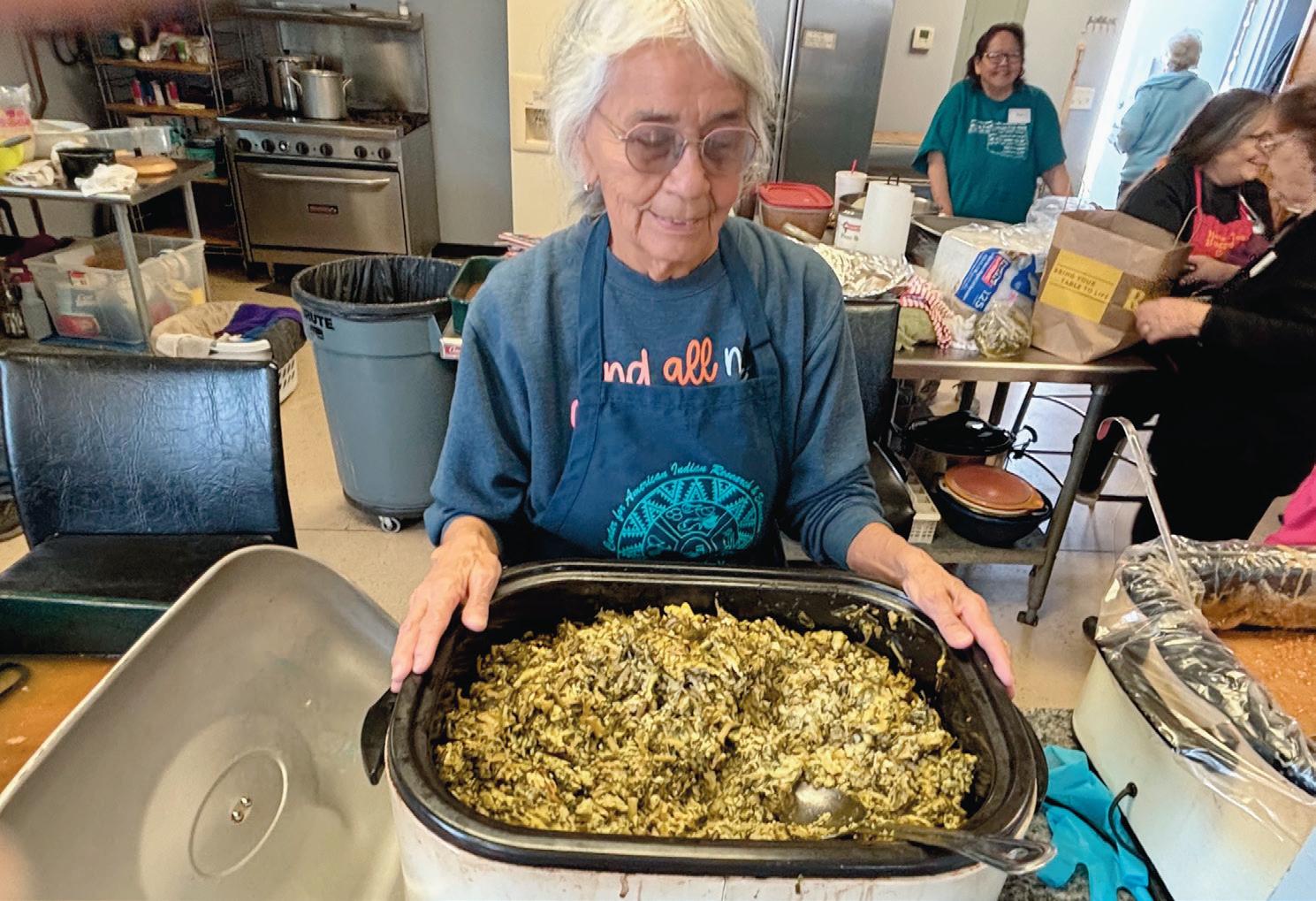
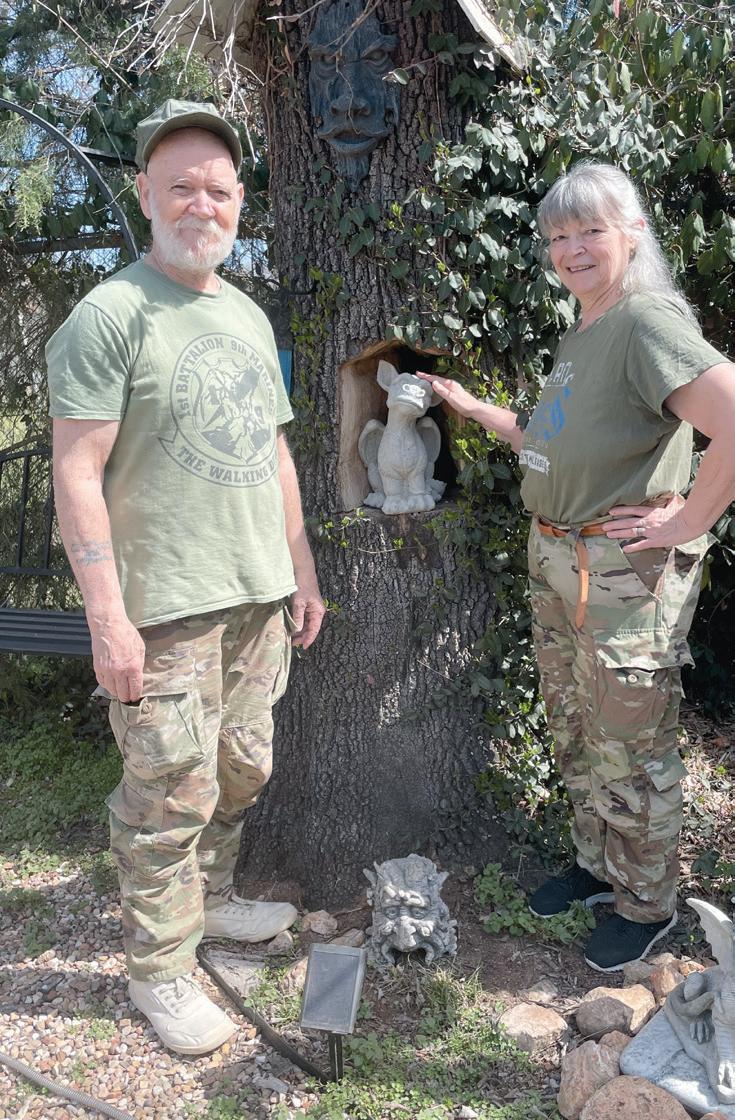
prefer their sand bass fresh and eaten within a day of being caught. A wellknown fact in Cherokee County is that sand bass fishers have a weakness for homemade pies. Trading homemade pie for a mess of fish is the best way to ensure a good catch each year.
The most desired of the early spring delicacies are morel mushrooms. Considered by many the best mushrooms ever, morels are elusive and difficult to find, growing in riverside bottomlands and low-lying deer woods where the soil is moist with layers of dead tree leaves. Fruiting time for morels is usually early April, when they are found at the base of sycamore, ash, apple, and elm trees. The harvest quality and quantity are usually dictated by the amount of rainfall and cold weather. More rain and warmer temps may cause morels to fruit a little earlier in the season. Morels are highly prized, costing upwards of $40 per pound on the market. Known for their roasted, meaty flavor – which is best prepared by sautéing in real butter – morels are usually the entrée rather than a side dish.
Finding an experienced forager to teach you how to hunt the mighty morel is unlikely since these hunters
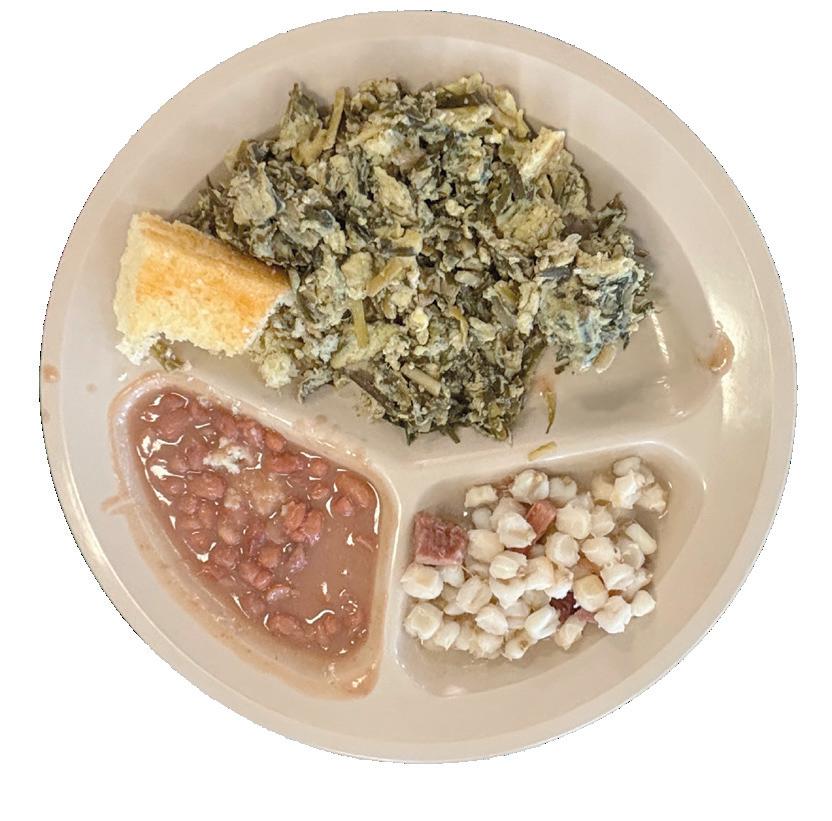
Tahlequah Public Library is hosting a monthly workshop on foraging; call 918-456-2581.
D.D. Etchieson Indian Methodist Church, 412 W. Seneca Street, Tahlequah, holds a wild onion dinner each spring and Indian taco dinners once each month at the church.
are most cagey about their “patch” location. However, morel hunters are generous souls who will share, especially with first-timers. So, if you aspire to have private hunting grounds, finding a patch of your own will be up to you. Key skills are to study your region, learn what trees grow there, and determine the most likely place to begin your watch early next spring. Serious hunters watch all year to be certain they have a harvest each spring. Morels only grow in places where they are very hard to detect because of their natural camouflage.
Scotty Batie and his family, river dwellers, and experienced foragers, have the most impressive harvest each spring. He relates this wisdom:
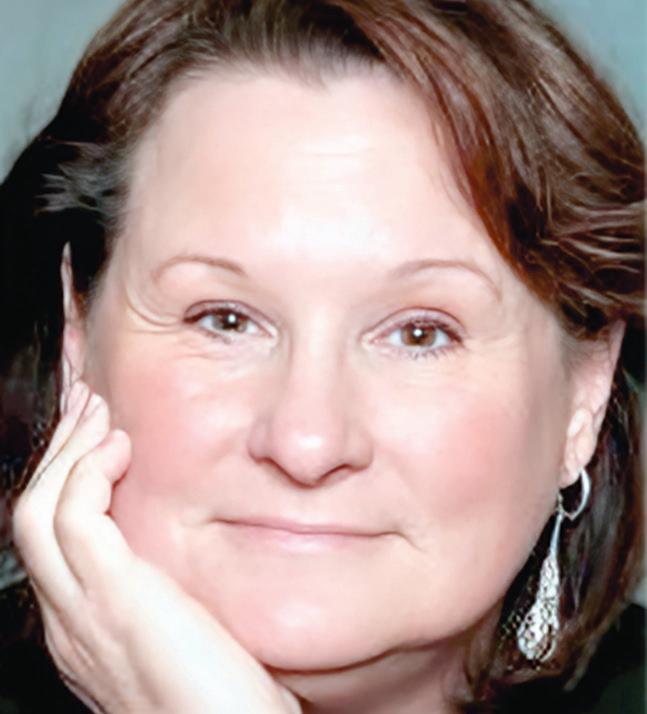
“Here in these parts, hunting morels is a lot like searching for Sasquatch; you know for certain it’s out there, but you just cannot see them.”
Pam Moore served as the first executive director of Help In Crisis Inc. beginning in July 1982 and serving for nearly a decade. She then worked for eight years as victim-witness coordinator for the 27th Prosecutorial District. Moore also served as subject matter expert for the Office on Violence Against Women and the Office for Victims of Crime until her retirement in 2016.

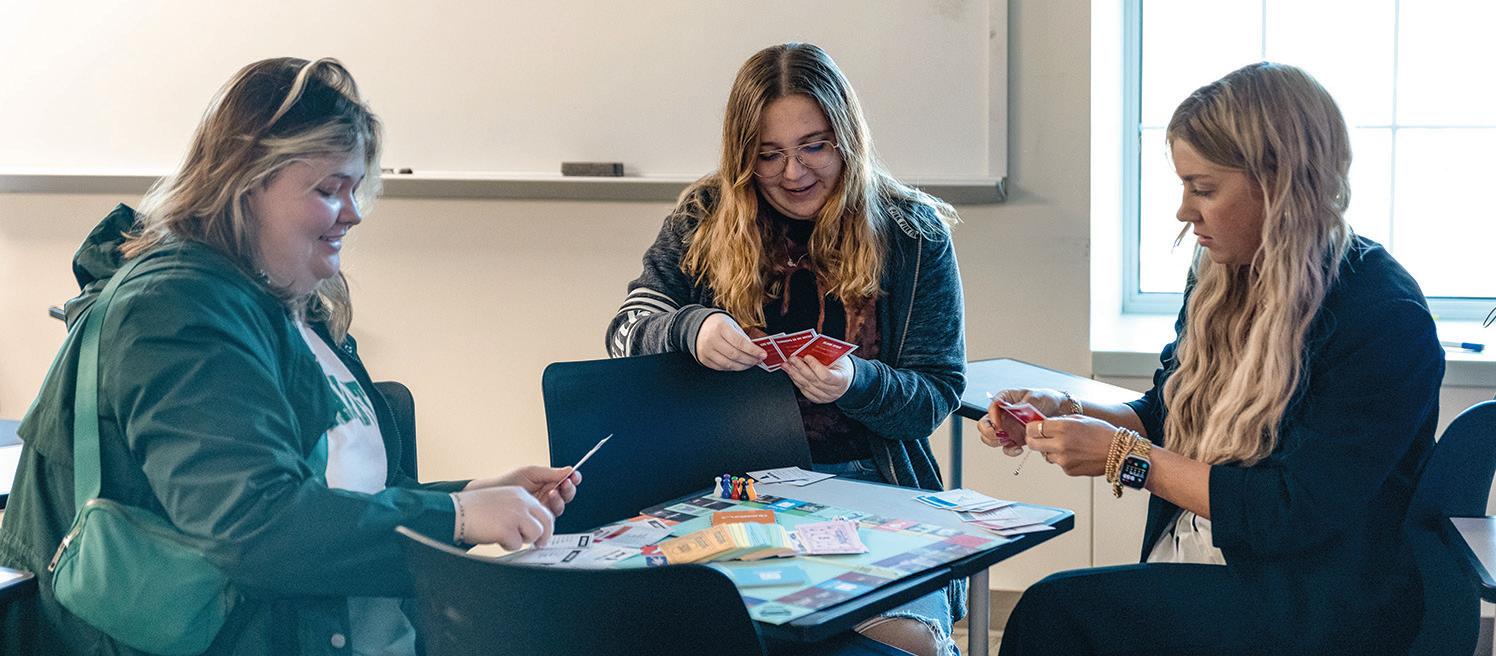
Students Bethany Craig and Michala Richards, from left, sit with Brooklyn Larrison, communication graduate assistant, to play a round of “Swiftopoly,” a Taylor Swift version of the classic board game Monopoly. The class Taylor Swift: The woman, the music, the industry began its second half of the semester with a focus on the brand and marketing that has catapulted the musician to global stardom.
Photo by Jayden Milton
By Angel Ford
Few names cause such a stir as that of Taylor Swift, country singer turned pop star icon. And the musician’s name did just that after Northeastern State University announced a new course titled “Taylor Swift: The woman, the Music, the Industry.
The reveal met with divisive opinions online, with some questioning the choice to spotlight Swift specifically. But despite the discourse, the class met in January for the music portion of the course and now has entered the remaining half, which will focus on the marketing and branding that is Taylor Swift.
Dr. Dana Eversole, communication and media studies department chair, is one of three instructors for the class. Eversole said she chose Swift because of her immense success and philanthropic efforts.
“I told the class this recently, this isn’t just about Taylor Swift, but about brands and marketing,” said Eversole. “Her brand – and she has several – her globally successful social media presence and her philanthropy, and even her boost with the NFL, I want them to be able to apply the ideas she uses within their future careers, in their
businesses. Let’s look at the things she does to brand herself and if they can utilize that in their lives.”
According to Eversole, students don’t just learn about Swift’s music, which Dr. Alexandra Doyle, assistant professor of music, kickstarted with in the first eight weeks of the semester. They also find out about Swift’s evolution as an artist and the marketing that captivated global fans with her brand and her art.
Brooklyn Larrison, communication graduate assistant, was chosen to help build the coursework and lead classroom discussion. Larrison, a self-professed Swiftie, was approached by Eversole due to her love for the musician.
“I was over the moon when Dana asked,” said Larrison. “For one, I think it’s a huge opportunity for NSU, and then the fact that I get to be a part of it and teach not only Taylor Swift, whom I do love, but also social media, which is another thing I’m pretty passionate about.”
One of the books used to create the coursework is “The 22 Immutable Laws of Branding.” Larrison said she was excited to tie these concepts into what Swift is doing and has
previously done.
“Truthfully, no matter what career the students go into, social media and marketing is going to be a part of their everyday lives,” said Larrison. “I hope getting to teach a few of these principles in a fun way will give them those skills for every day, but then also I hope it’s enjoyable. I think a lot of these basic principles are things they can apply in their everyday lives, and it’s a skill that they can add to their resumes.”
One student, Kurrin Mounce, Wagoner senior, grew up listening to Swift, but stopped shortly after the musician made a switch from country to pop. Despite falling out of the Swiftie fanbase for a short while, Mounce said she wanted to take the class from a business standpoint.
“I think she’s become a successful person; her marketing is really good,” said Mounce. “I love the way she does her social media, how she announces her releases, and obviously, she had a successful tour. So I think there is a lot to learn from the business side of her, not just musical. Her overall image and her branding and how she deals with the media, is something I am interested in because it aligns with what I
want to do in the future
To Mounce, Swift is a childhood icon, and the class continues to keep her attention because of its focus on various aspects of the musician. Mounce said she would like to see the class take a deeper dive into Swift’s art of storytelling.
“Maybe a deeper analysis into her lyrics,” said Mounce. “The first eight weeks, we did talk a lot about the music. But from the point of view of people who like to write, I think it would be interesting to really analyze lyrics because her lyrics tell a story. I think it would be cool to see more of that in the future.”
Eversole said she has invited Matt Eaton, a media studies graduate who toured with Carrie Underwood, to speak to the class. A special day has been planned for a group of 10 elementary school children to learn about Swift. They will have the opportunity to make Swiftie bracelets alongside NSU students on the day. Angel Ford Angel Ford is a graduate student pursuing a master’s degree in public relations, with a bachelor’s in media studies. Currently a graduate assistant in the media studies department, Ford has experience in her former role as editor-on-chief of The Northeastern and as a freelancer writer for The Broken Arrow Sentinel.





